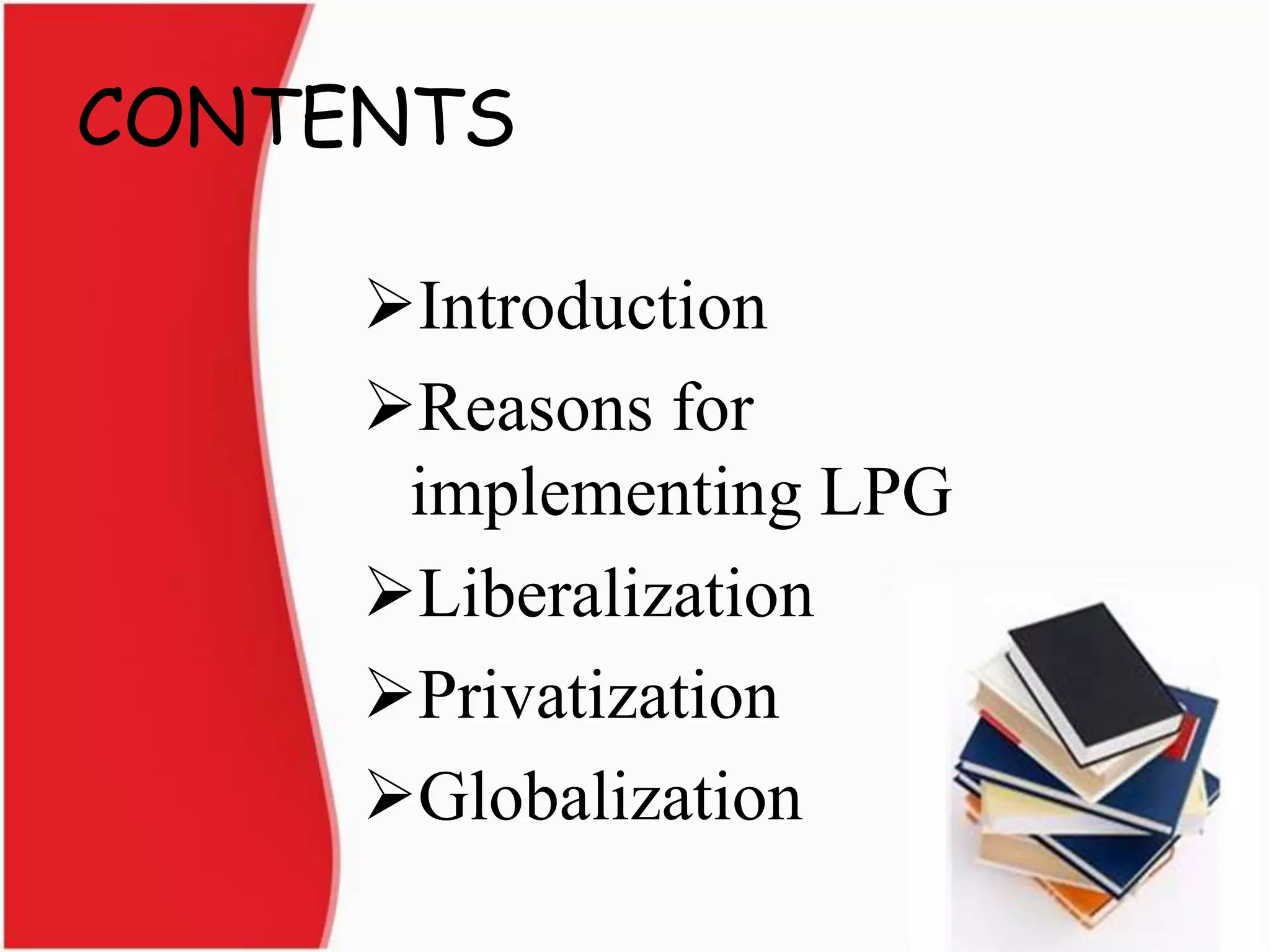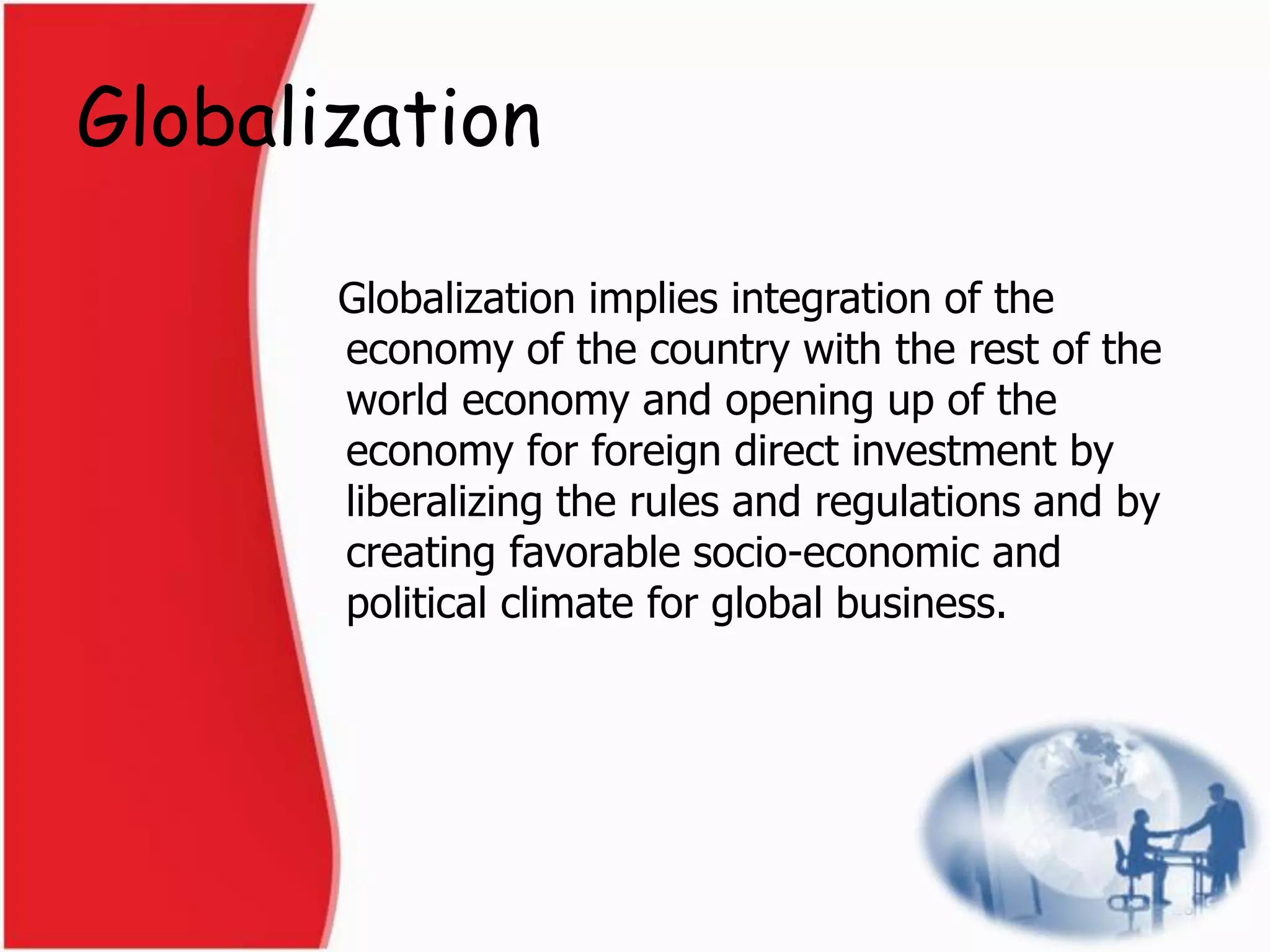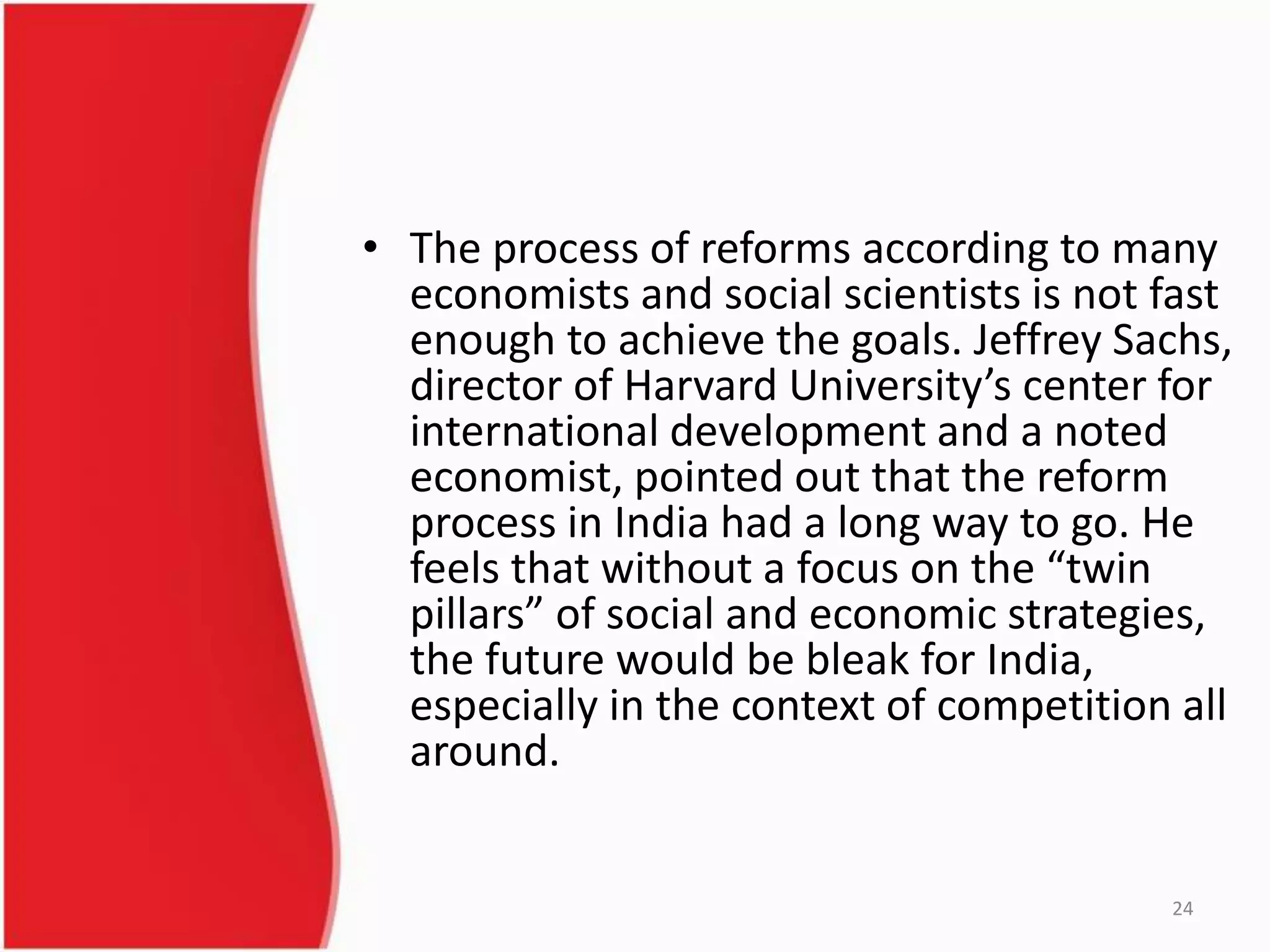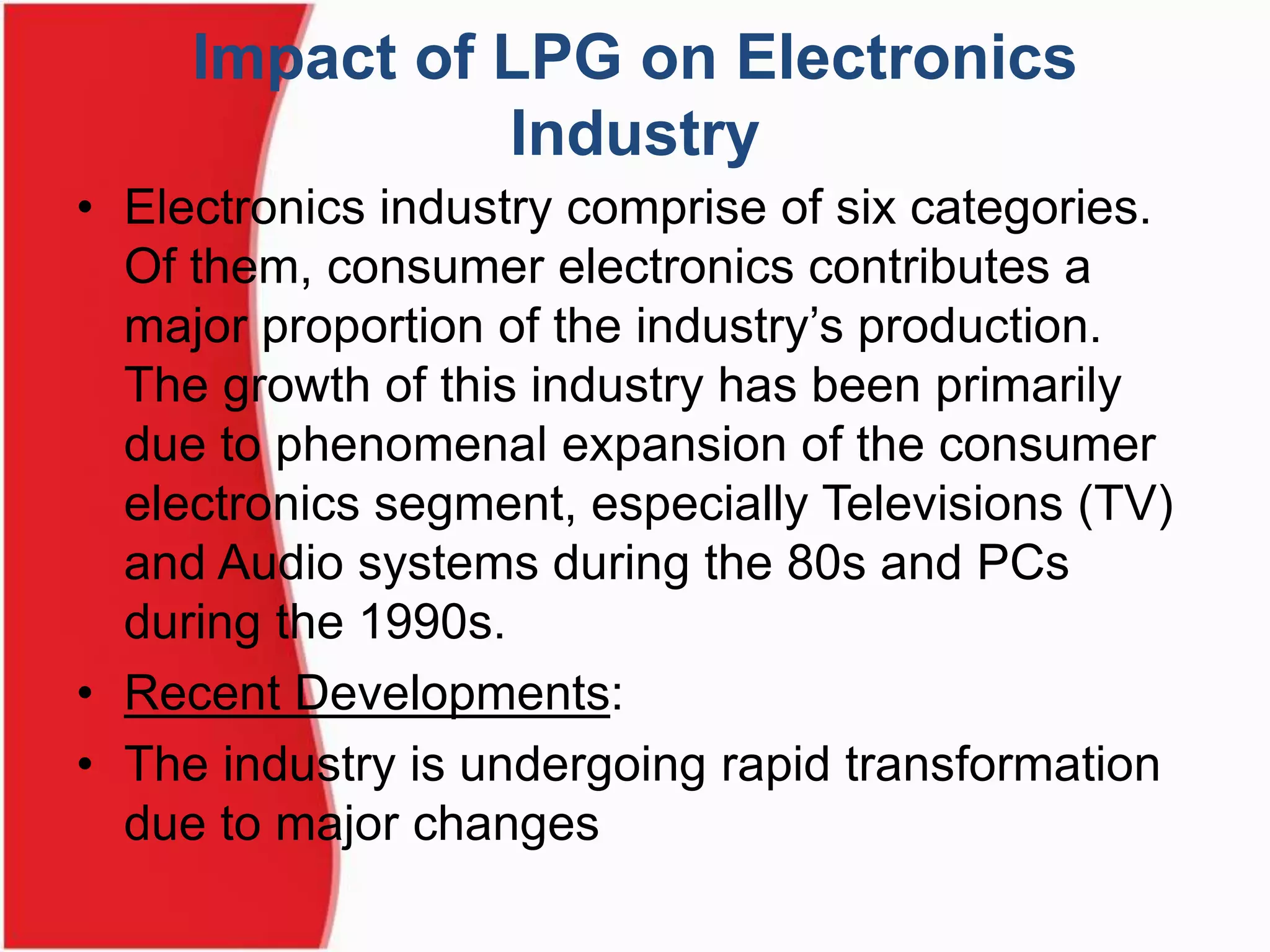The document discusses India's new economic policy introduced in July 1991, focusing on liberalization, privatization, and globalization (collectively known as LPG) as measures to restructure the economy due to issues like inefficiency and heavy government borrowings. It outlines the advantages and disadvantages of these policies, including increased foreign investment and competition, as well as potential job losses and inequality. The impact of liberalization on various industries, especially automobiles and steel, is analyzed, noting significant changes in competitive dynamics and the growth of the private sector.







































